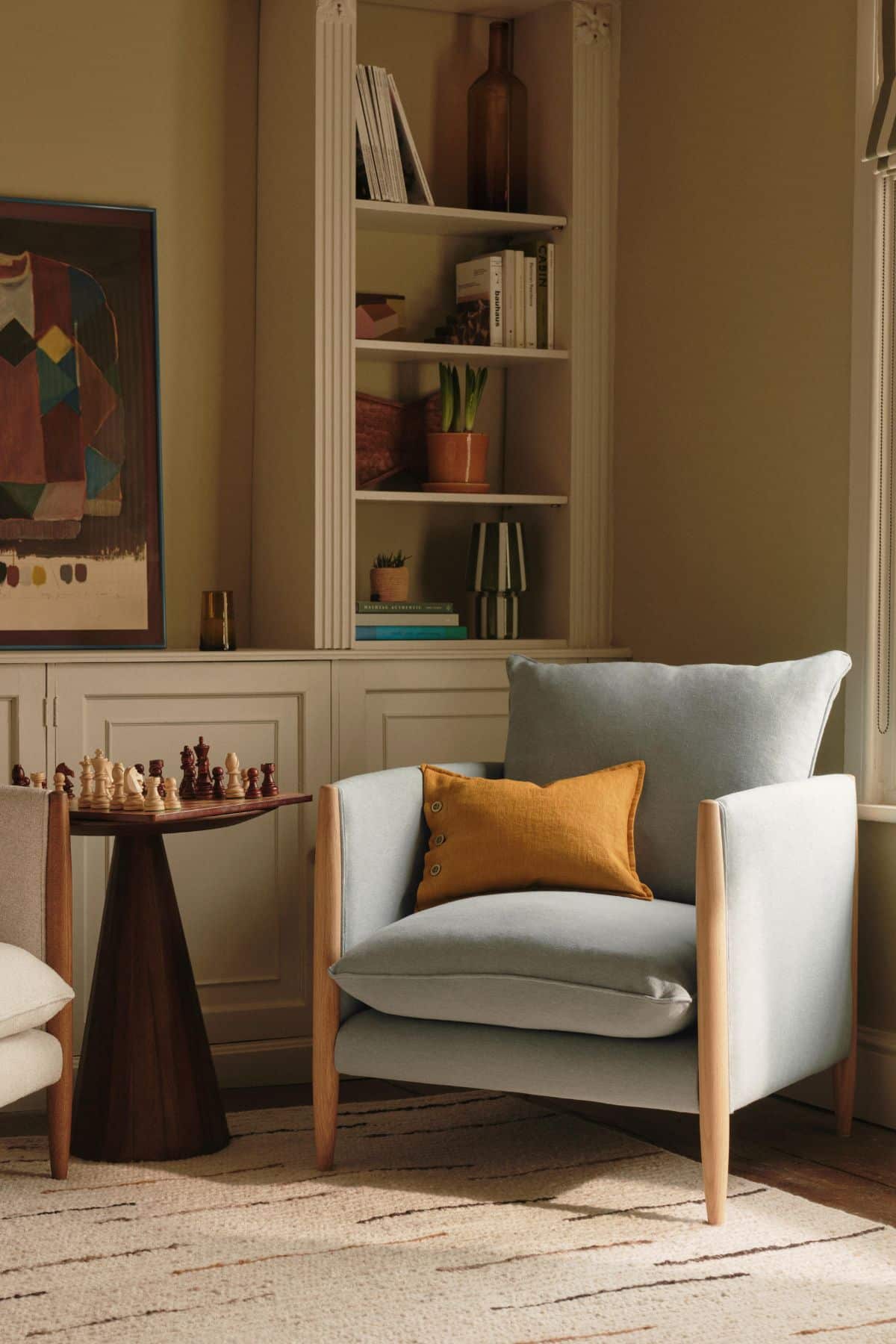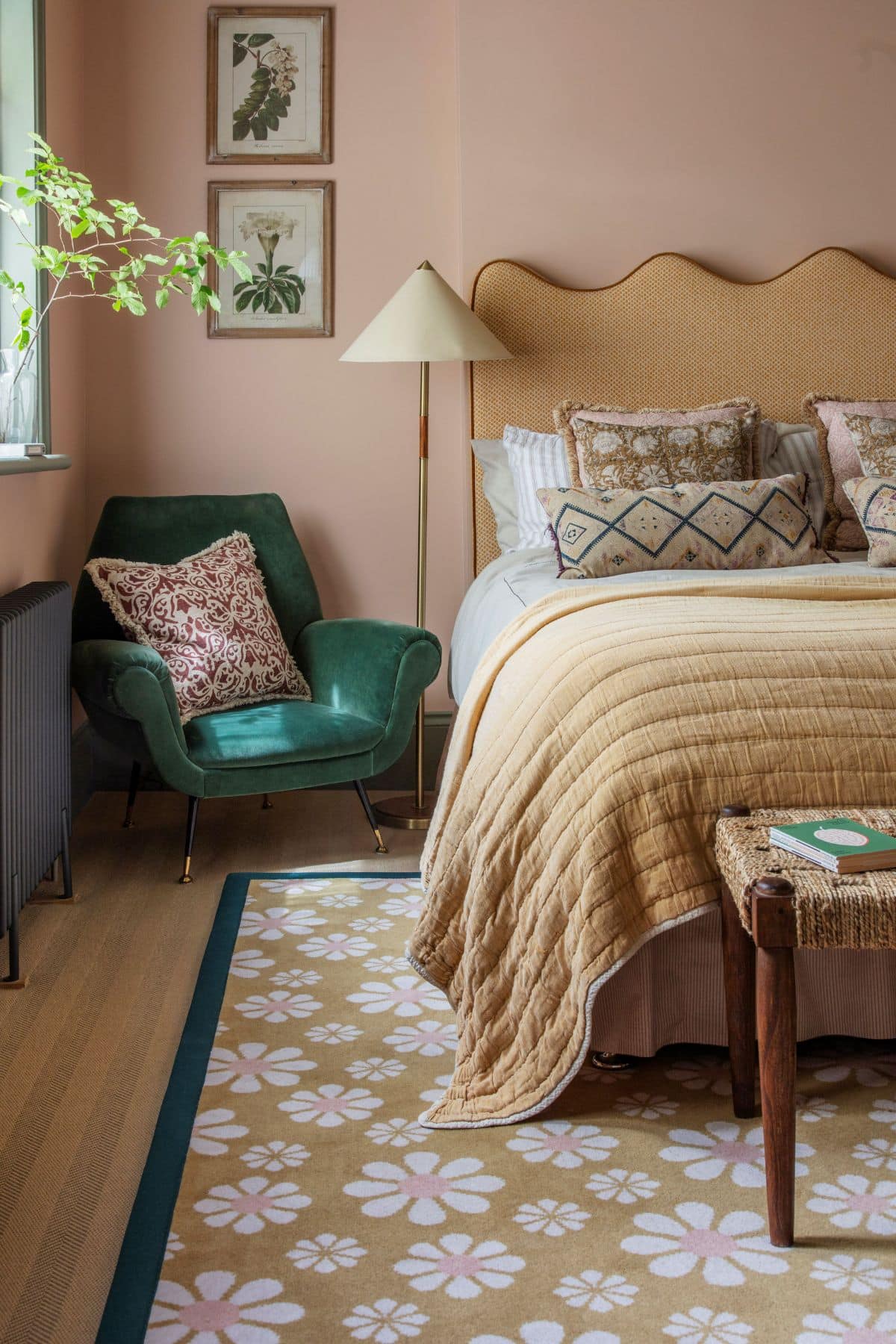
As an interior designer, the most common mistake I see being made with rugs is buying them too small. In a large living room that’s not supported by the right size rug, the result is a rug that looks like a bath mat and the rest of your furniture looking like it’s floating.
“A rug that’s too small reads like a DIY gone wrong – the room feels smaller, choppier, less inviting, and can completely undercut the design of a room”, added Ellie Stein, Founder and Principal Designer at Stein Studio Interior Design.
There are no set or hard fast rules when it comes to successful rug buying, as rug sizes should ultimately be dictated by the furniture in that said room.
So, I spoke with a handful of other designers to weigh in on all things rugs, and the sizing guidelines you really should be following.
What Are The Most Common Rug Buying Mistakes?
Let’s address the elephant in the room. Buying rugs that are too small for the space they’re purchased for is the biggest rug buying mistake I see people making.
“One of the most common mistakes I see is choosing a rug based only on visual appeal or sale pricing without measuring the full layout. People skip the tape measure and guess. That leads to rugs that are too small or oddly placed. Another big one is placing rugs that stop awkwardly short of walls or major furniture. It shrinks the room visually and breaks the balance”, agreed Emily Demirdonder, Director of Operations & Marketing, Proximity Plumbing.
“When choosing a rug, I always err on the side of bigger. Few things throw off a room faster than a rug that’s too small. Have you ever walked into a space that just felt off, but you couldn’t quite place why? It’s often the rug. Because rugs usually take up the most visual real estate in a room, any sizing mistake becomes instantly noticeable—and it’s hard to unsee once you do”, says Ellie.
Whilst size is the most common mistake, this seems to be closely followed by those being driven by the price of the rug, and of course, the smaller the rug, the cheaper it’s going to be. “One common mistake? Buying rugs based on price or availability—not spatial needs. Rugs should frame and ground a space, not just fill a void”, added Sara Mosele, Founder & Principal, Sara Mosele Interiors.
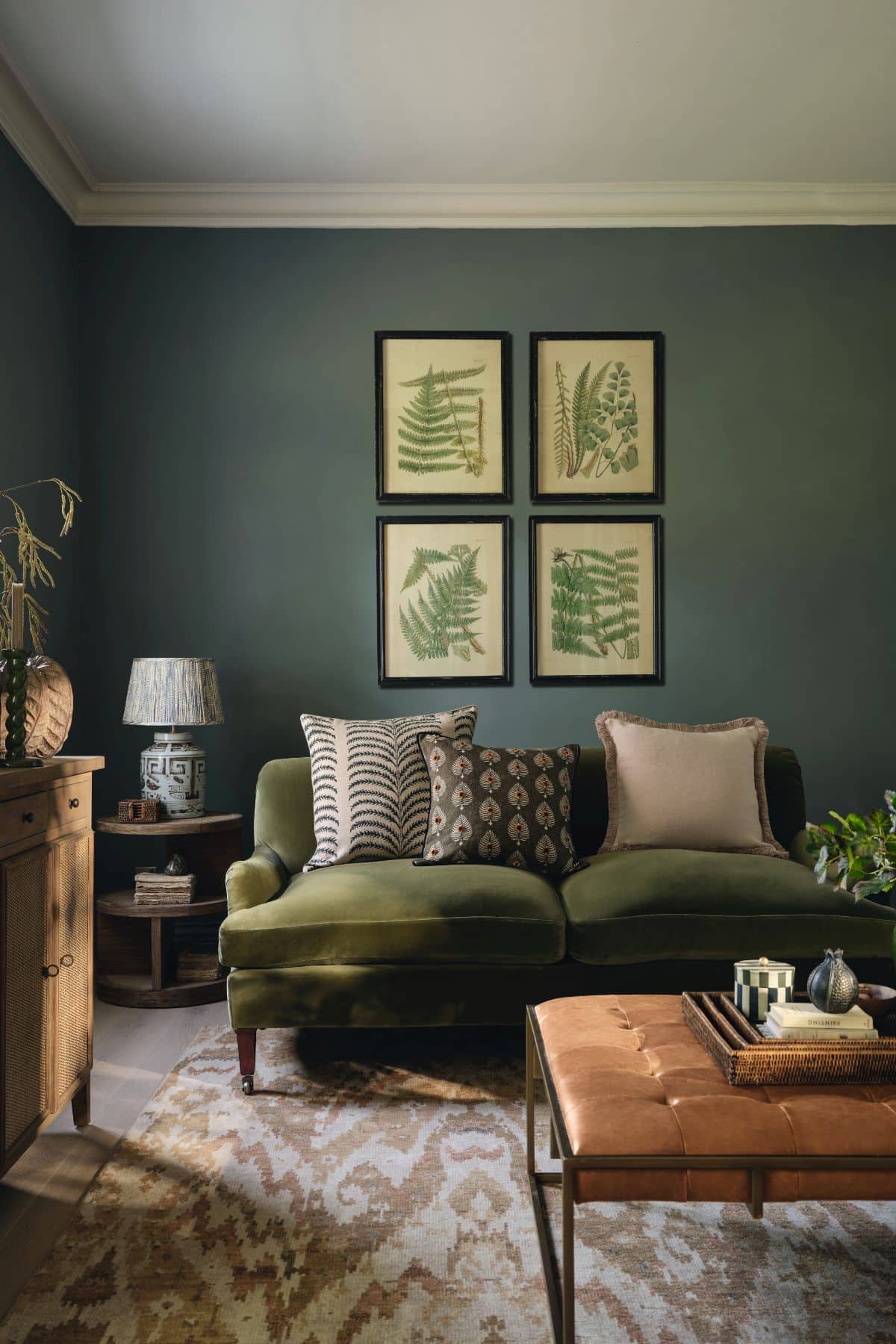
How To Determine What Size Rug To Buy?
A magic formula unfortunately doesn’t exist for rug sizing and what to buy. Having said this, there are some really easy ways to get it right. Choosing the right rug size generally has nothing to do with the size of the room, but rather how much furniture you’re sitting on top of it.
A good area rug in places such as a living room or bedroom are used to ground a room and the furniture, not to sit in isolation on their own. So when deciding on the rug size, they need to be part of the conversation.
Courtney Batten, Interior Designer at Paige Studio shared her top tips on rug sizing, “When in doubt, always go bigger. A rug should ground your space, not float in the middle of it. Most living rooms do best with at least a 9×12, and bedrooms typically need an 8×10 or larger, especially if you want to frame the bed properly. Ideally, all your furniture should sit completely on the rug, but at the very least, the front legs should be anchored”.
“A simple rule I follow is leaving around 20 to 30 cm between the edge of the rug and surrounding walls in smaller rooms, and up to 45 cm in larger ones. For dining rooms, always allow enough rug around the table so that chairs stay on it when pulled out. Around 60 cm extra on all sides usually works”, adds Emily.
Following the lead of your furniture is the best way to determine what size of rug you need, “when selecting a rug size for the bedroom it is important that the width of the rug is at least as long as the ends of the nightstands, and should extend far enough out in front of the bed to really feel the rug in the room, ideally a minimum of 3”, says Samantha Gallacher, Founder of Art+Loom custom rugs in Miami.
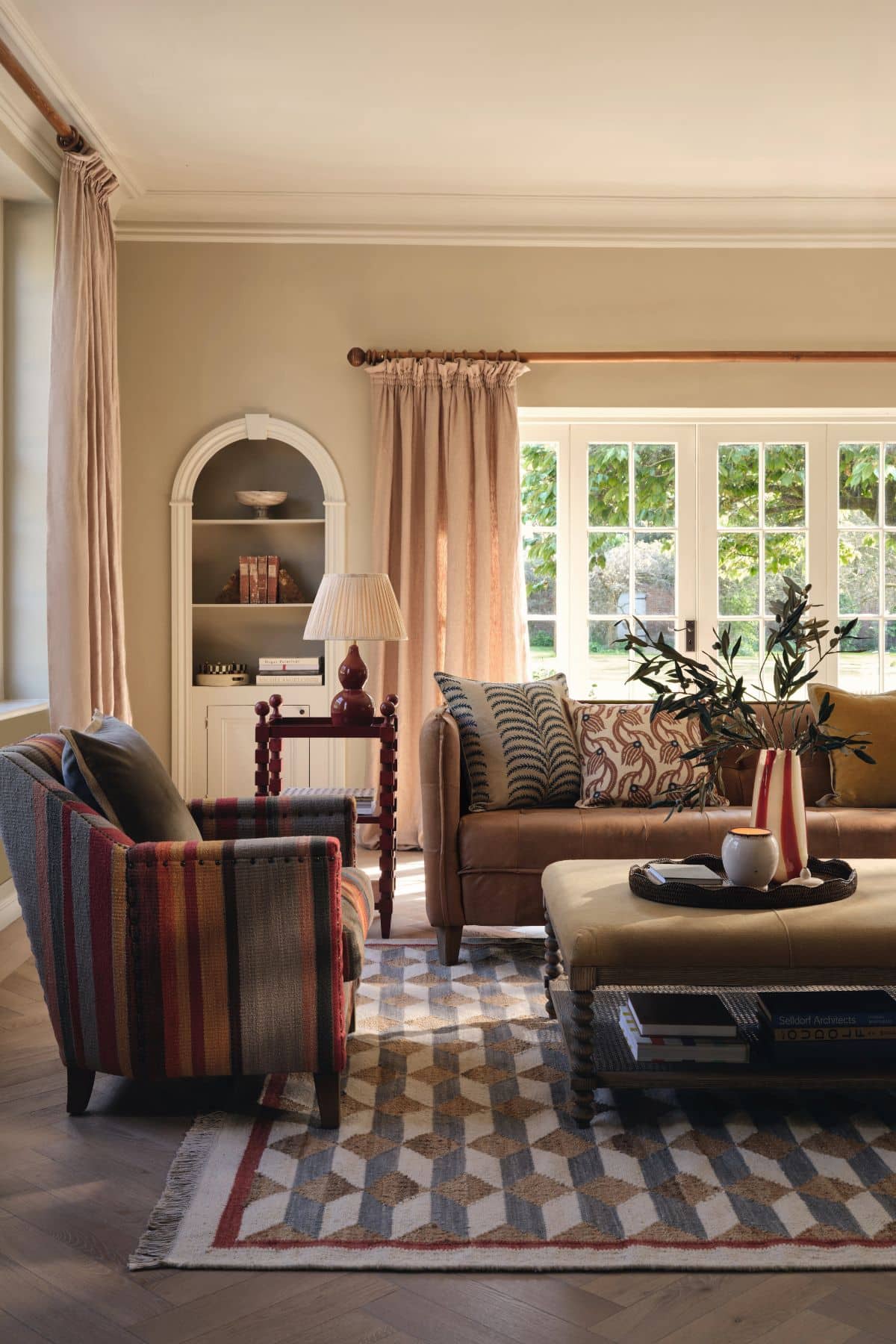
Rugs do tend to come in standard set sizes so you know what parameters you’re working within. However, following the above guidelines, you may still feel the prospect of it daunting.
Your two best friends here are a tape measure and masking tape. I always use masking tape to mark out the size or sizes of the rugs you’re considering. This is one of the best ways to get a read of how the area rug is going to sit with your furniture.
At this point you can then make sure all the boxes are ticked and crossed in regards to where your furniture is sitting on the rugs, and the clearance from the furniture, to rug and the rest of the floor.
The below image is a perfect demonstration of how the area rug allows for all furniture to sit comfortably on it, even if it is only the front legs of chairs.
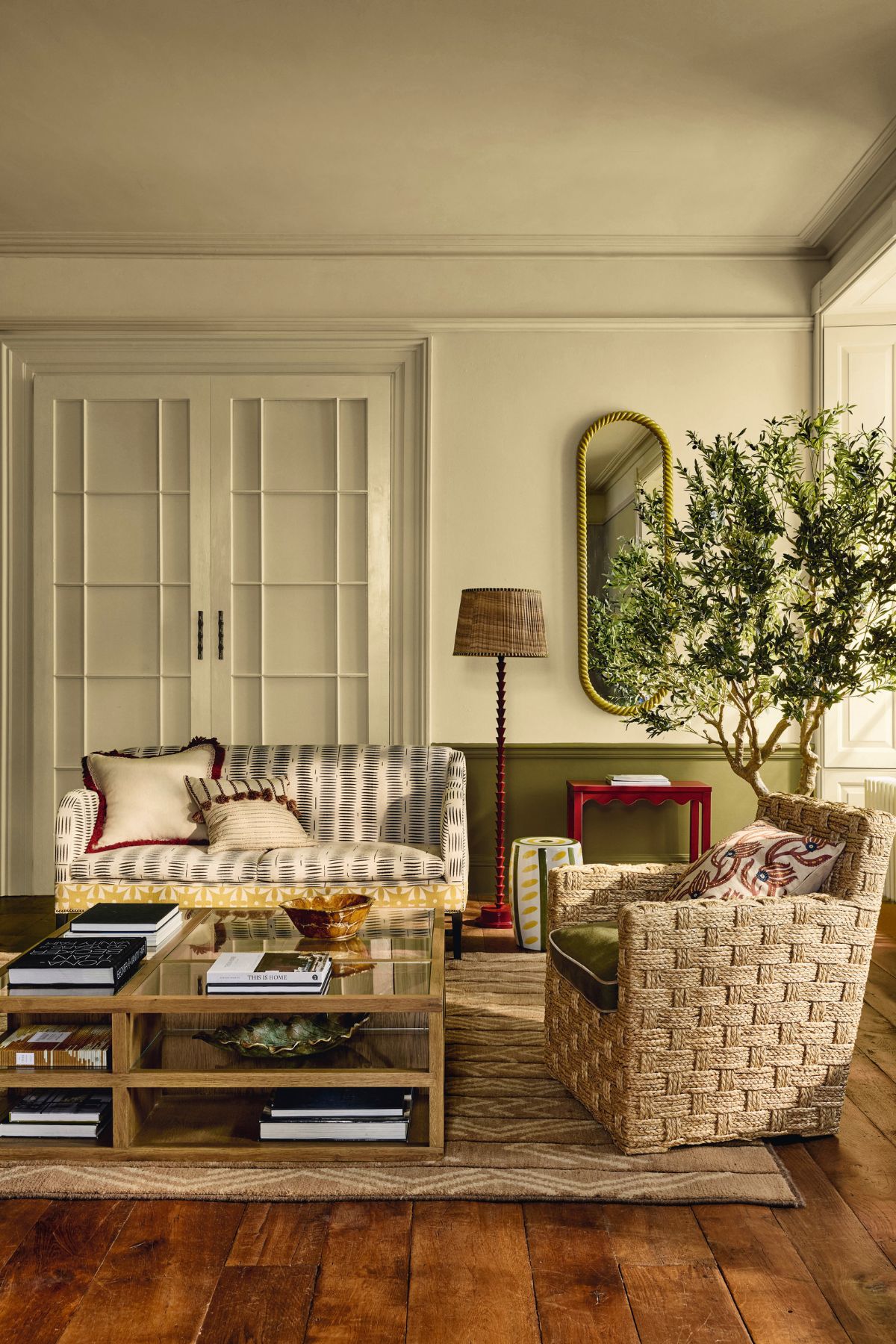
Handy Rug Sizing Guidelines The Experts Use
Most designers share similar thoughts and have a general rule of thumb that they always follow when purchasing rugs for projects.
Rug rules absolutely do tend to change based on the room too, so I’ve pulled together some of the best pieces of advice to screenshot for your rug buying needs.
- Sara Mosele on rugs in Living Rooms & Dining Rooms – “As a rule of thumb: in living rooms, we ensure at least the front legs of all major seating pieces sit on the rug. In dining rooms, the rug should extend at least 24–30 inches beyond the table on all sides to allow chairs to slide out comfortably without catching”.
- Emily Demirdonder on rug rules – “A simple rule I follow is leaving around 20 to 30 cm between the edge of the rug and surrounding walls in smaller rooms, and up to 45 cm in larger ones. For dining rooms, always allow enough rug around the table so that chairs stay on it when pulled out. Around 60 cm extra on all sides usually works”.
- Karen Watts, founder of Domisource on rugs in Bedrooms – “you want your rug to extend at least 18 – 24 inches beyond the bed on three sides. A 9×12 rug usually does the trick for a king, and an 8×10 usually works for a queen. Anything smaller will feel like you’re using a bathmat in the middle of the room”.
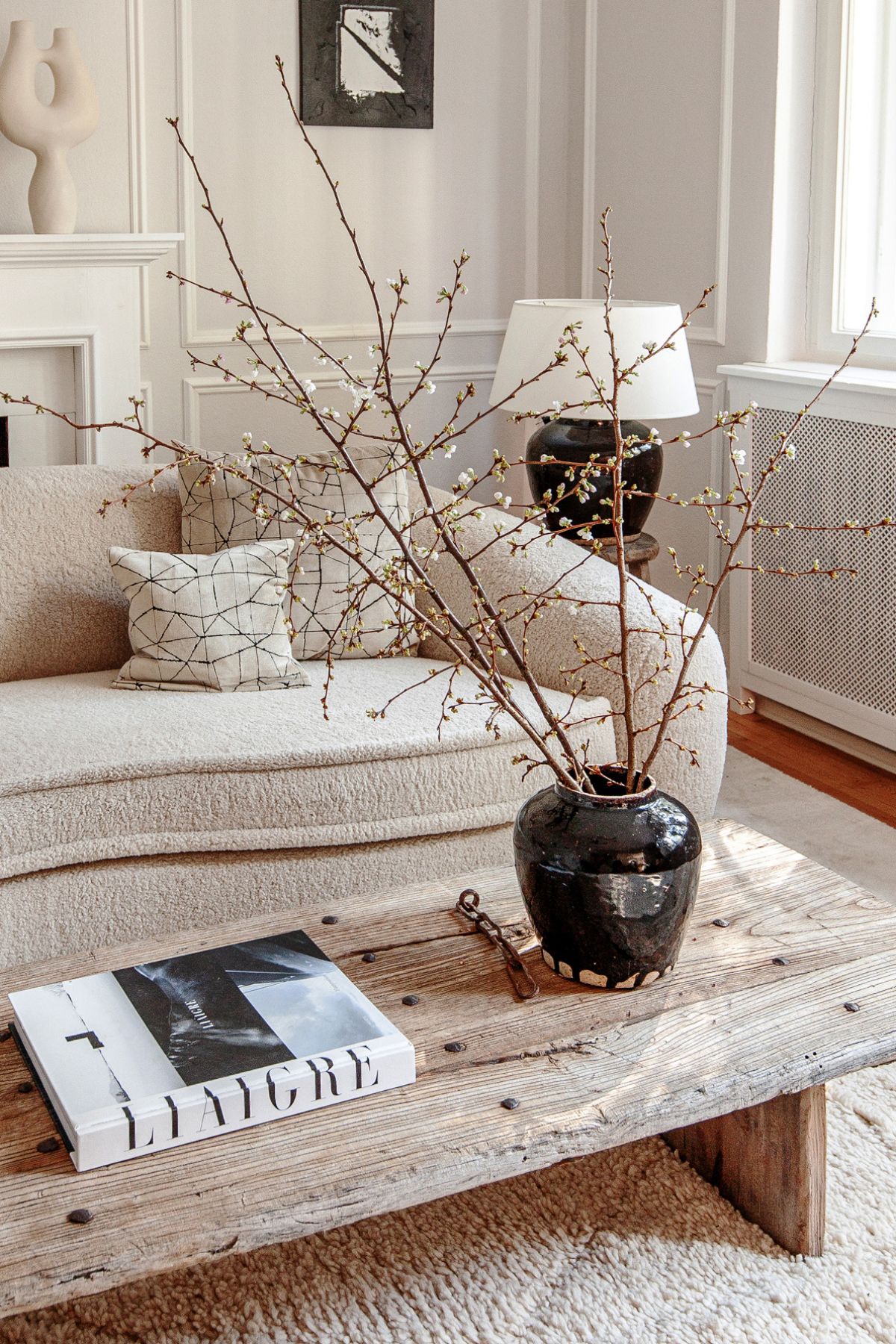
A well proportioned rug really is that key ingredient that can pull together any room scheme, and well, bigger generally is better where rug size is concerned.
The experts have spoken and choosing your rug size based on availability, price or the size of your room isn’t the way to go. Lean into the size and amount of your furniture in these key rooms, and measure first. If in doubt, always size up!

